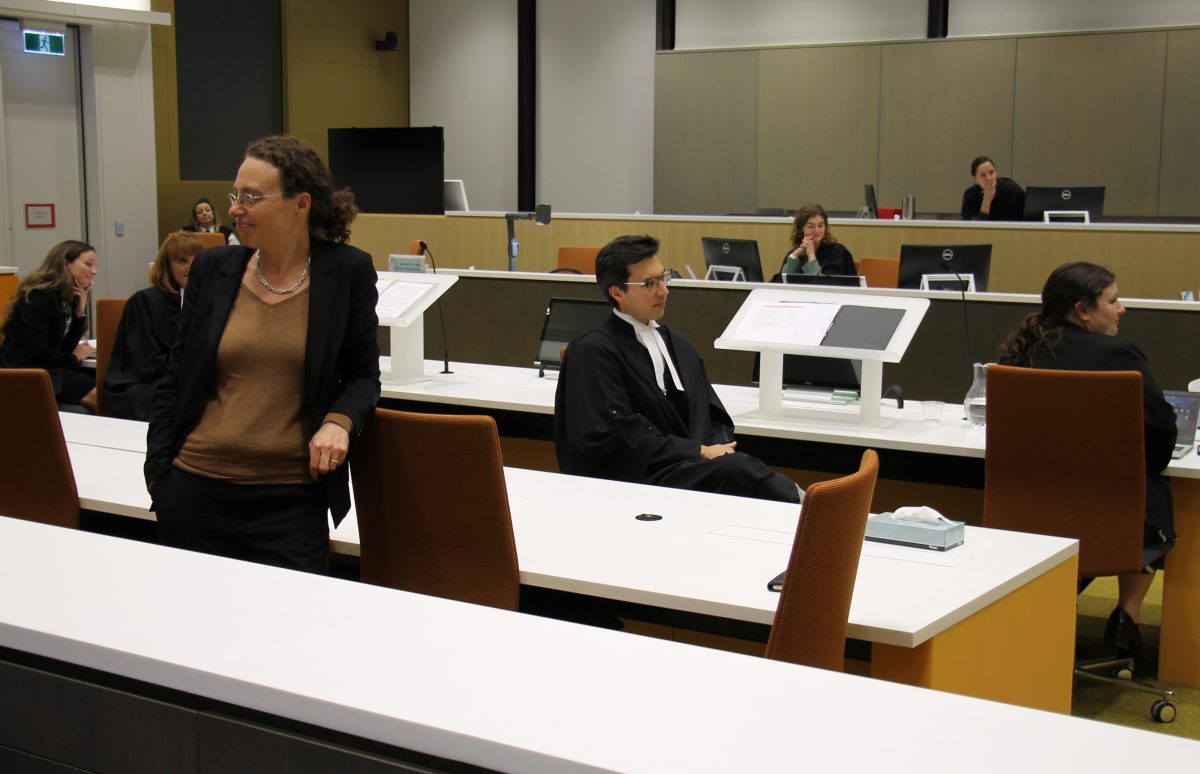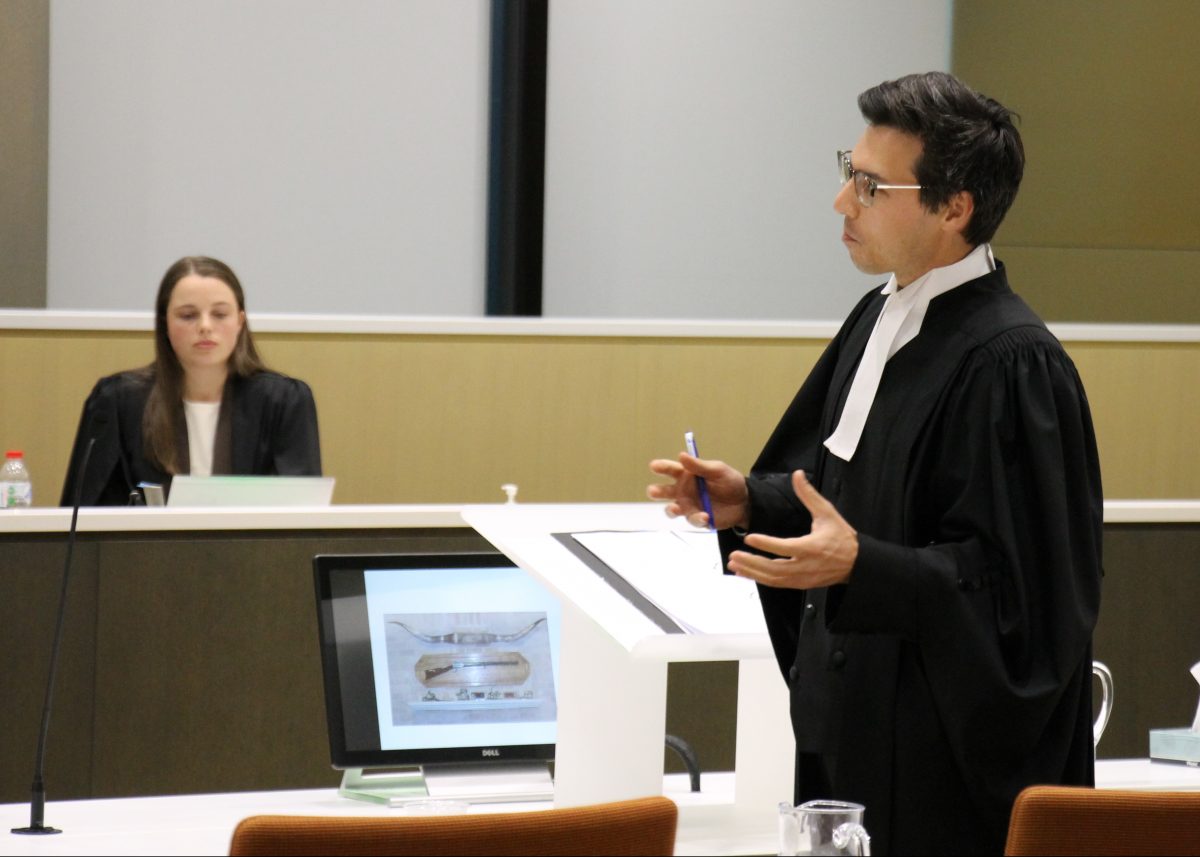
Professor Lorana Bartels, barrister Keegan Lee and Special Magistrate Rebecca Christensen helped with the mock sentencing on Thursday. Photo: Albert McKnight.
Just how does a judge decide whether or not they should send a defendant to jail?
Essentially, there are many competing factors, pushing or pulling in each direction, on whether to let them live in the community or lock them up.
Members of the public were asked what they would do with a defendant at a mock sentencing held at the ACT Courthouse on Thursday (12 May) as part of Law Week 2023, during a discussion on how judges go about this challenging task.
Chief Justice Lucy McCallum said the court had put together a problem with a “pointy-ended question” for the demonstration on whether or not the defendant should go to jail.
The part of the defendant, who had pleaded guilty to a charge of making a threat to kill, was played by Australian Federal Police Association president Alex Caruana.
“I told him this morning, he better bring his toothbrush!” the chief justice said, as time would tell whether he got a full-time sentence or not.
Judges have been criticised when people think sentences are too lenient or too harsh, but they can only impose sentences set down by parliaments, the Australian National University’s Professor Lorana Bartels told the courtroom.
She said parliaments write offences, specify maximum penalties and sentencing options, then a judge sentences a defendant within those parameters but takes into account specific circumstances.
Among the numerous matters judges have to consider, they have to ask, what was the nature of the offence? Was it premeditated? Did the defendant plead guilty? Do they have mental health or substance use issues? Why did they commit the offence? Are they pursuing their rehabilitation? What was the harm to the victim? Also, what sentencing options are available?

Professor Lorana Bartels (left) and Chief Justice Lucy McCallum speak to the courtroom. Photo: Albert McKnight.
Professor Bartels said while most people think of full-time prison when they think of sentencing, other forms of sentences were available.
She said the research showed prison was often not the most effective form of sentencing for crime prevention, saying short-term prison sentences, in particular, were not effective.
Also, imprisonment was “not cheap,” she said.
A defendant could be handed an intensive corrections order, which meant they could remain in the community subject to conditions such as participating in a domestic violence program.
They could also be handed a Drug and Alcohol Treatment Order, which involves intensive monitoring of offenders with drug or alcohol addictions.
The professor said the most common order is a fine, noting that the law required that a court only impose a prison sentence if no other option was appropriate in the circumstances.
Now, back to the mock sentencing.
The defendant was a 29-year-old office manager at the Dunder Mifflin Paper Company (which is, of course, from the famed TV comedy, The Office) who had already committed several minor offences and one count of assault.

Barrister Keegan Lee talks during the mock sentencing. Photo: Albert McKnight.
A person with Italian heritage, in June 2022 he was at the Kings Arms pub when the victim made derogatory remarks about him.
The defendant pulled down a gun displayed above a fireplace, pointed it at the victim’s head and said “I’ll kill you” before pulling the trigger. However, the gun didn’t fire.
The defence barrister, played by Keegan Lee, argued the offence was not premeditated, was a reaction committed in the face of a racial slur and the defendant didn’t believe the gun was capable of firing.
He said the defendant was recovering from the death of his wife at the time, had a difficult childhood, had taken responsibility and had gone to counselling.
The mock sentencing prosecutor, Katrina Musgrove, argued the gun could be discharged, but it was sheer luck and poor storage that saw its cartridge deteriorate and not light when the trigger was fired.
She also argued the threat to kill was made when holding a gun against the victim’s head and it was not an appropriate response to racial abuse.

Barrister Katrina Musgrove performed the part of the prosecutor at the mock sentencing. Photo: Albert McKnight.
The judge was Special Magistrate Rebecca Christensen. She said the main reason the gun didn’t fire was good fortune due to ammunition failure but also found it was reasonable to assume that a gun displayed in such a way would not contain ammunition or be capable of firing.
She said a prison sentence was appropriate due to the seriousness of the crime, but it would be served in the community so the defendant could continue his rehabilitation.
He was sentenced to four years’ jail, fully suspended with 200 hours of community service.
Chief Justice McCallum remarked that he “got lucky” as he was allowed to return to the community, keep his job and participate in community life.














